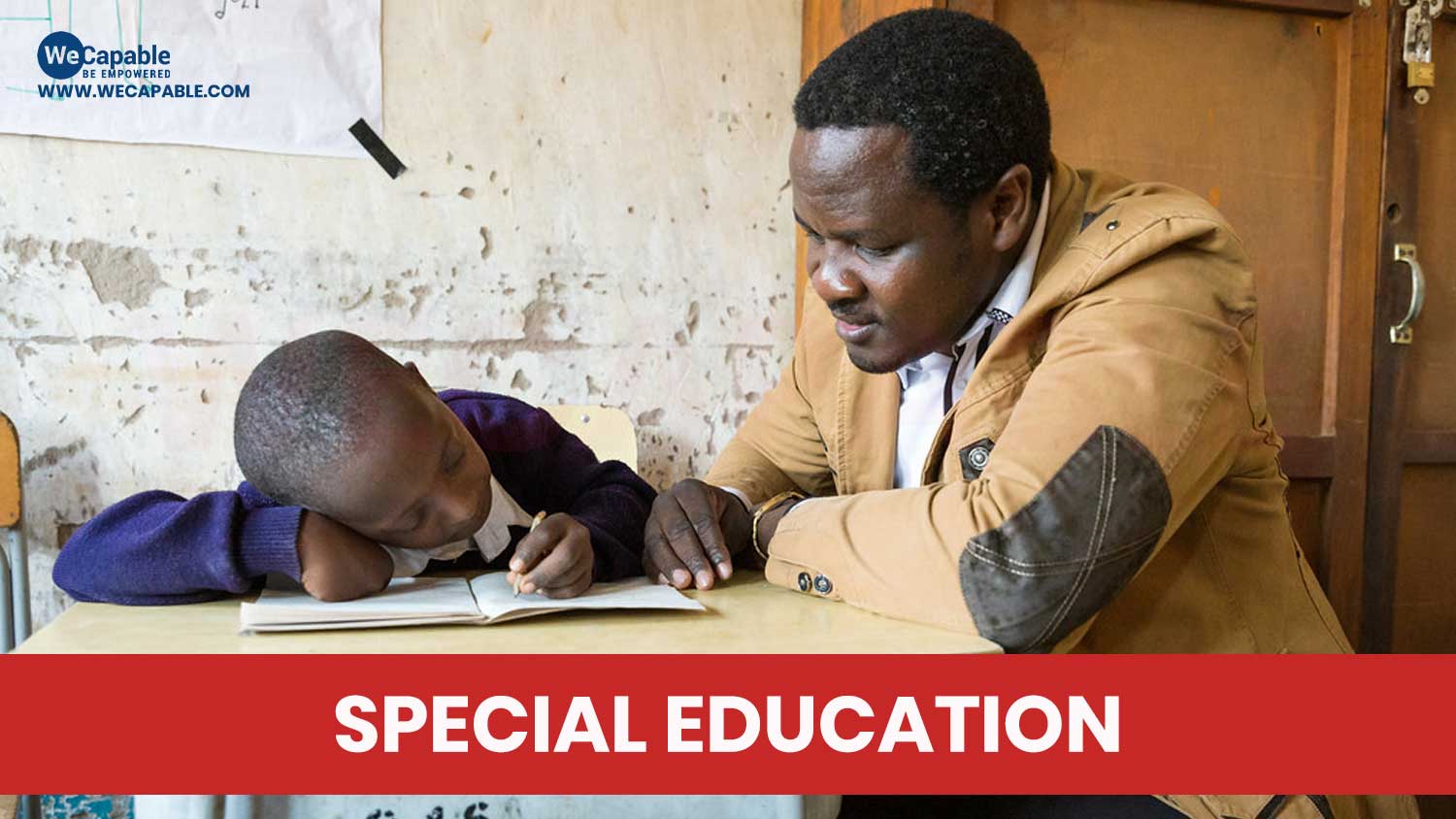Special Education may not be a new term for you. We come across this term so often. However many people people may not have a clear and right understanding on the meaning of special education. Here we are sharing the details about Special Education that everybody must know.
Special Education: Definition
Special education is a kind of inclusive education. It is a specially designed education system for children who are different – socially, mentally, or physically, as compared to the average population. And, the difference is to such an extent that the children require modification in the usual teaching practices.
Special education may be needed by children with behavioral, emotional, or cognitive impairments or with intellectual disabilities or learning disabilities. Children with vision and hearing impairment or neurological disabilities too may benefit from special education. Not only this, gifted children with advanced academic abilities may also need to be imparted special education.
We must note here that special education is not a favor towards a special child rather it’s her right. Laws in many countries govern that special education must be imparted to every child who needs it without putting an extra burden on the parents of those children.
History of Special Education
Many ancient cultures of the world contain a few isolated examples of people with special needs getting special education. However, there does not seem to be an institutional framework for special education in the ancient world.
It was not until after the emergence of the renaissance and its emphasis on human dignity that the world saw some baby steps towards the development of the special education system. Pedro Ponce de Leon, in 1500s, set an example by teaching the art of speaking, reading, and writing to deaf pupils. Juan Pablo Bonnet supposedly published the first book on this matter in 1620 by listing the method used by Pedro Ponce de Leon. It was after this period that many institutions in the European countries started providing special education to deaf individuals.
In 1784, Valentin Haüy opened the National Institution of Blind Youth in Paris with 12 blind pupils. This is the institute where Louis Braille studied and developed the braille script. Subsequently, many schools for the blind opened in other European countries.
Scientific attempts to educate and train children with intellectual disabilities can be traced back to 1807. That’s when Jean-Marc-Gaspard Itard, a French physician and otologist, published his book An Historical Account of the Discovery and Education of a Savage Man about his 5-year efforts to train an intellectually impaired boy. The book showed the possibility of educating intellectually disabled children and became the starting point for research in this regard.
It was not until the late 20th century that special education for children with disabilities became universal in European countries. Today more and more countries are getting on the bandwagon but the progress is not very rapid.
The Modern Approach to Special Education
Today special education is known by different terms viz. special needs education, aided education, exceptional education, and exceptional student education, etc. Regardless of the name, the modern approach to special education is focused on providing accommodations in traditional education to meet the individual needs of special needs children. The teaching procedure is planned individually and is systematically monitored to facilitate any needed change in the approach. The modern methodology is not limited only to specially designed teaching procedures but also pays attention to providing adapted equipment and materials and accessible settings.
The modern approach to special education is based on the fact that many children with special needs require individualized attention. These children cannot form a homogeneous group with other children with the same or similar disability. This can be understood with an example of children with cerebral palsy. A child with cerebral palsy has a locomotor disability but she may also have a higher level of intelligence or a learning disability. Thus, we cannot simply put all children with cerebral palsy in a group. They need to be assessed individually for their special needs. Some children may join regular classes after a few initial years of special education that prepares them to fit in the regular classes of regular schools. But, a few may need special education even in higher classes.
So, assessment and diagnosis of the special need form the basis of the modern approach to special education. There are a few different formats of special education that we have covered in one of our earlier articles. You can read that to understand the different types of special education formats of the modern world.
Use the citation below to add this article to your bibliography
"Special Education: Meaning, Definition and History." Wecapable.com. Web. July 27, 2024. <https://wecapable.com/special-education-meaning-definition-history/>
Wecapable.com, "Special Education: Meaning, Definition and History." Accessed July 27, 2024. https://wecapable.com/special-education-meaning-definition-history/
"Special Education: Meaning, Definition and History." (n.d.). Wecapable.com. Retrieved July 27, 2024 from https://wecapable.com/special-education-meaning-definition-history/


Leave a Reply